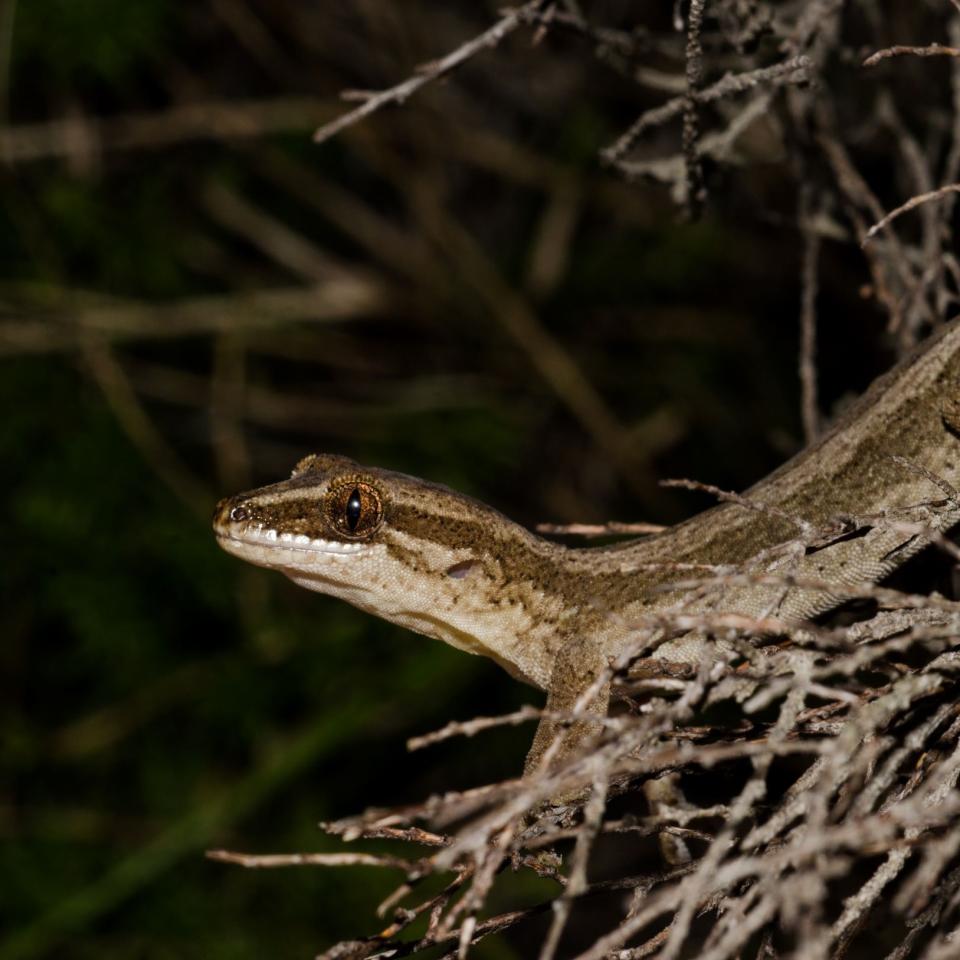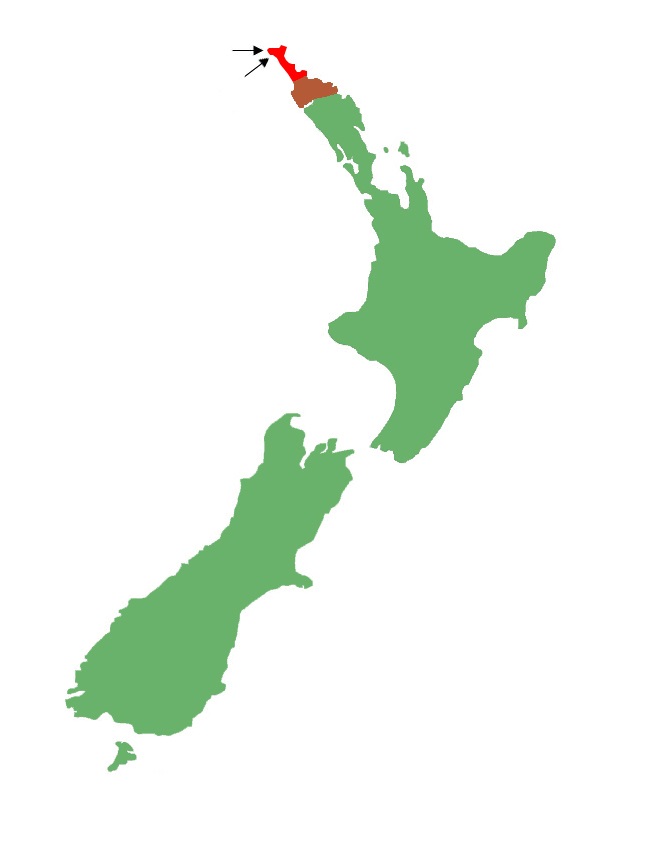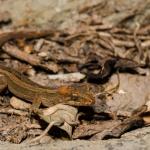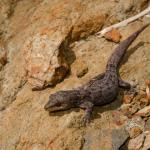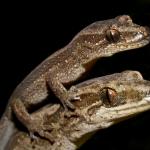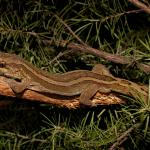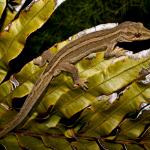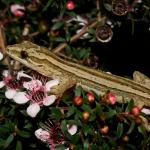- Home
- Herpetofauna Index
- Native
- Dactylocnemis "Matapia Island"
Dactylocnemis "Matapia Island"
Matapia gecko
Dactylocnemis "Matapia Island"
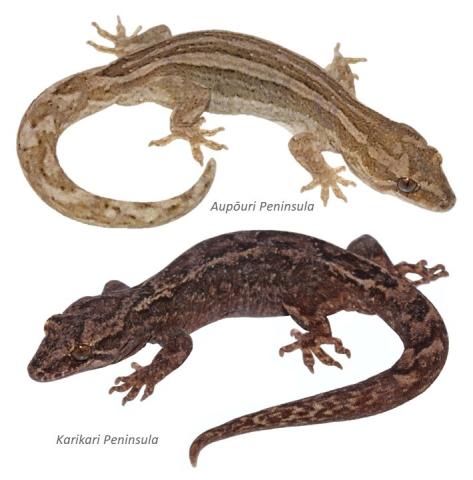
Length: SVL up to 60mm, with the tail being equal to or longer than the body length
Weight: 3.5 grams.
Description
A beautiful and often strikingly marked gecko from the far north of New Zealand.
The Matapia gecko is the smallest member of the Pacific gecko species complex (Dactylocnemis spp.). The appearance of this species varies with locality; with animals from the Aupōuri Peninsula being golden-brown to dark olive in colouration, and typically having two pale dorsal stripes running from the nostrils onto the tail, whilst the animals from the Karikari Peninsula are often darker with more variable patterning. The sides of the animal are two-tone with a broad brown band sitting above the cream ventral surfaces.
Distinguished from the co-occurring Te Paki gecko (Dactylocnemis "North Cape") by its smaller size, dark tongue tip, and tendency to have dorsal striping.
Life expectancy
Unknown
Distribution
Restricted to Northland's Aupōuri Peninsula and Karikari Peninsula, as well as several of their outlying islands.
Ecology and habitat
As with other members of the Dactylocnemis genus, this species is nocturnal and is just as likely to be found foraging on the ground (terrestrial), as in canopy (arboreal). Known to cryptically bask at the edge of retreats. A habitat generalist, found associated with scrub, shrubland, and cliff faces.
Social structure
Likely to be solitary, but may utilise the same refuge sites as congeners.
Breeding biology
Unknown, but likely to be similar to the Pacific gecko (Dactylocnemis pacificus).
Diet
As with other members of the Dactylocnemis genus, Matapia geckos are omnivorous. They have been recorded feeding on a wide range of invertebrates, as well as the nectar and fruit / berries of native plants.
Disease
Largely unknown.
Matapia geckos have been recorded with ectoparasitic mites in the wild.
Conservation strategy
The Matapia gecko and its sister taxon the Te Paki gecko (Dactylocnemis "North Cape") are both listed as "At Risk - Declining". This is due to the ongoing clearance of scrubland (young manuka and kanuka forest), and predation by mammalian pest species (rats, cats, mustelids, etc.). Matapia geckos have strongholds on several pest-free islands around Northland, but mainland populations are at an increased risk of local extinction.
Interesting notes
The Matapia gecko gets both its common and TAG names from Matapia Island, a small island off Northland's 90 mile beach where this taxon was first recognised to be distinct from the co-occurring Te Paki gecko.
Matapia geckos are members of the genus Dactylocnemis, a group of closely related species which are confined to the North Island of New Zealand, are regionally distributed (including several island-endemic species), and were once all considered as a single highly-variable species - Hoplodactylus pacificus.
The Matapia gecko belongs to the "southern clade" within the Dactylocnemis genus, with it being the sister taxa to the Pacific gecko, Poor Knights gecko, and Mokohinau gecko.
References
Hitchmough, R. A. (1977). The lizards of the Moturoa Island Group. Tane, 23, 37-46.
Hitchmough, R.A., Barr, B., Lettink, M., Monks, J., Reardon, J., Tocher, M., van Winkel, D., Rolfe, J. (2016). Conservation status of New Zealand reptiles, 2015; New Zealand threat classification series 17. Wellington: New Zealand Department of Conservation.
Jewell, T. (2011). A photographic guide to reptiles and amphibians of New Zealand. Auckland: New Holland Publishing.
McCallum, J. (1981). Reptiles of the North Cape region, New Zealand. Tane, 27, 152-157.
van Winkel, D., Baling, M. & Hitchmough, R. (2018). Reptiles and Amphibians of New Zealand: A field guide. Auckland: Auckland University Press, 376 pp.

